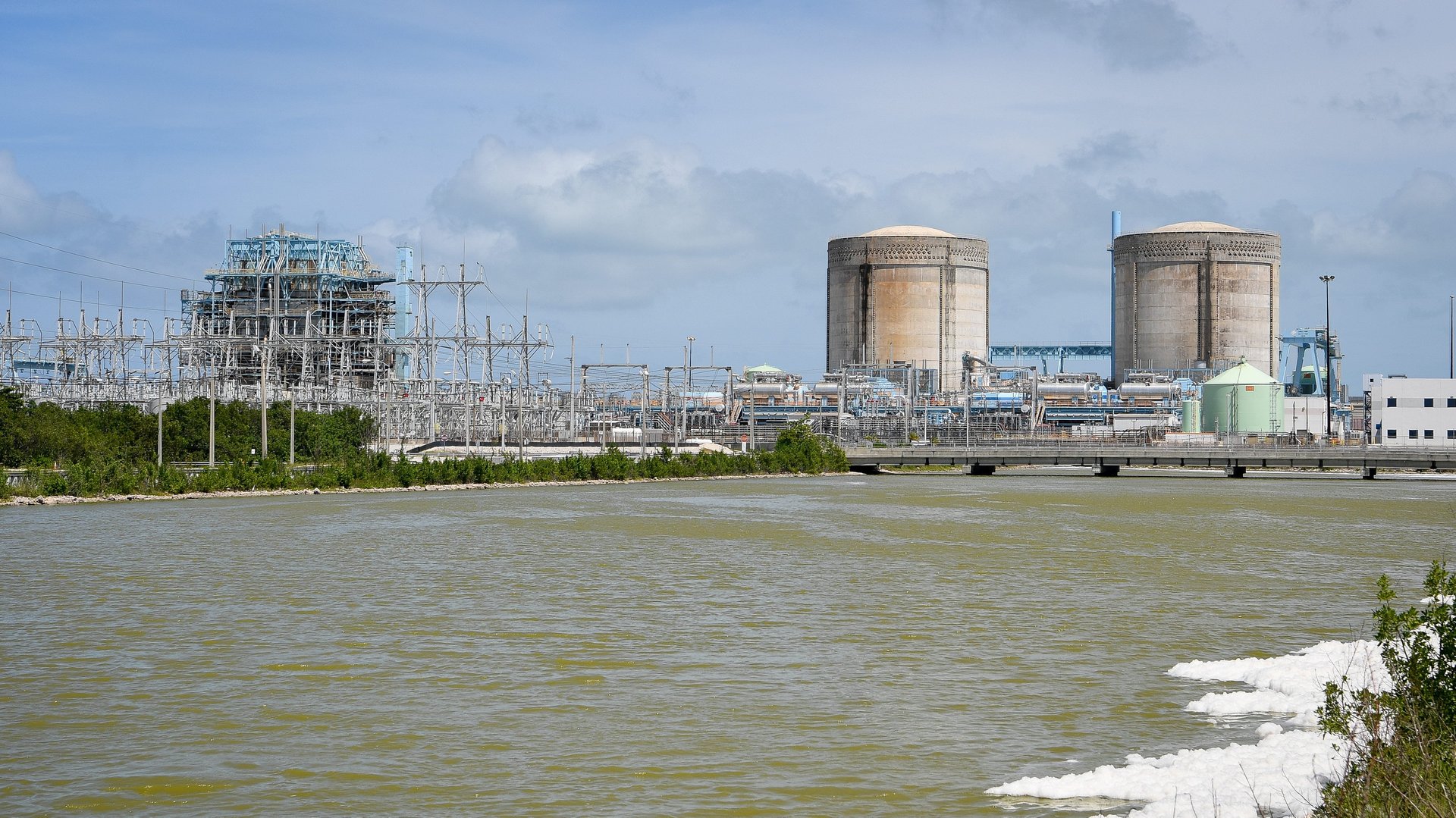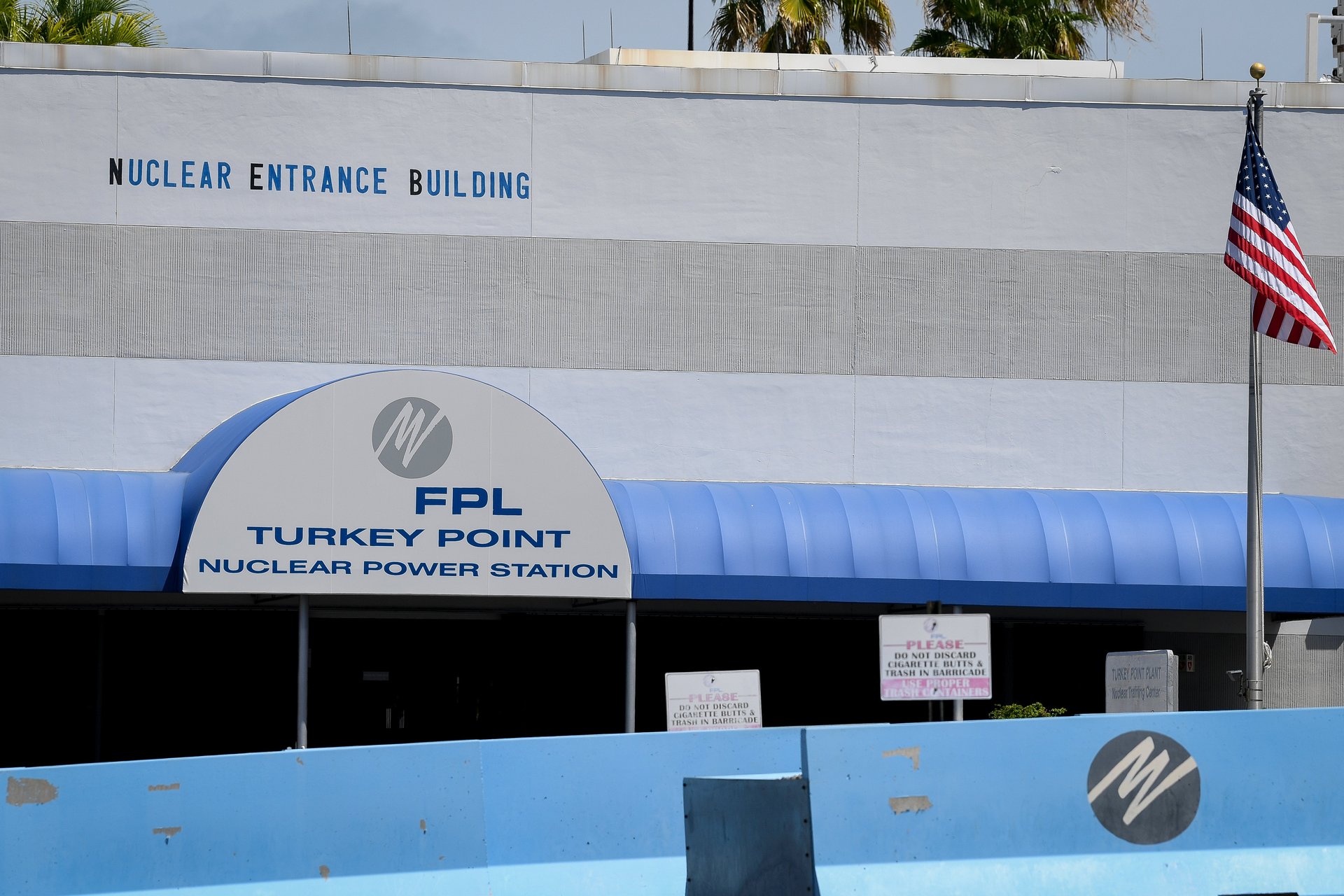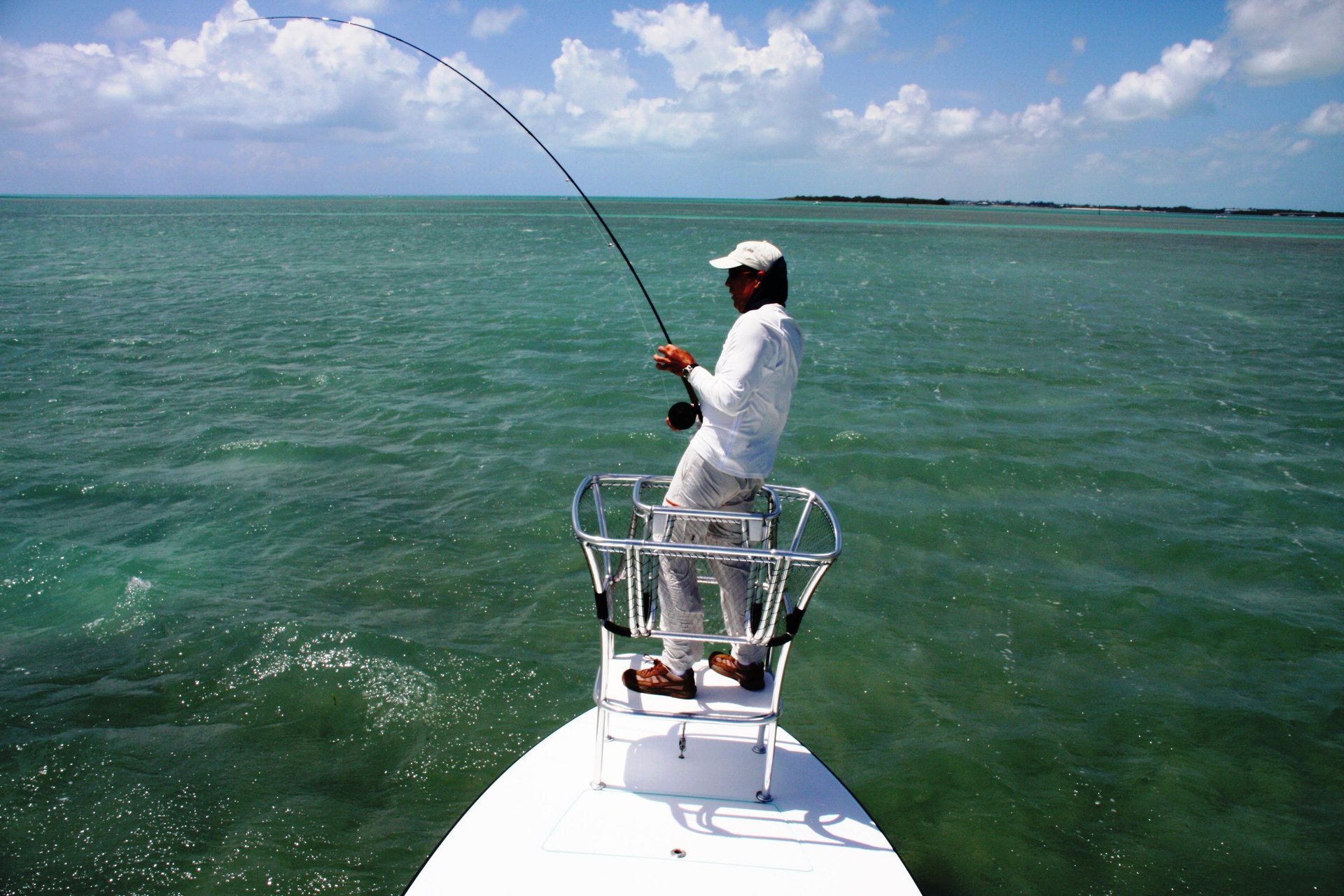America’s green energy hopes hinge on propping up aging nuclear plants
About 25 miles south of Miami, there’s a nuclear power plant perched on a low-lying ridge tucked between the swamp and the sea. Its two reactor facilities, built in 1972 and 1973, don’t exactly blend in: The drab, concrete cylinders squat above the blue waves of Biscayne Bay and the muted green expanse of the Everglades—both delicate ecosystems protected as national parks. Thousands of crocodiles patrol an adjoining labyrinth of manmade cooling canals.


About 25 miles south of Miami, there’s a nuclear power plant perched on a low-lying ridge tucked between the swamp and the sea. Its two reactor facilities, built in 1972 and 1973, don’t exactly blend in: The drab, concrete cylinders squat above the blue waves of Biscayne Bay and the muted green expanse of the Everglades—both delicate ecosystems protected as national parks. Thousands of crocodiles patrol an adjoining labyrinth of manmade cooling canals.
Dubbed Turkey Point, the plant powers nearly a million south Florida homes and has been humming along for nearly half a century. If all goes according to plan for Florida Power & Light (FPL), the plant’s owner, it’ll keep running at least until the early 2050s, remaining unchanged while an expected two feet of sea level rise slowly transform the surrounding landscape.
Nuclear power plants like Turkey Point generate 20% of US energy and the majority of its green energy. They’re a crucial piece of the country’s plan to reduce its carbon emissions. If the US has any hope of meeting its climate goals, it needs nuclear to remain a significant part of its energy mix.
The trouble is, most US plants, like Turkey Point, were built in the 70s and 80s. Many have already seen their original 40-year licenses expire, and they’re now operating on 20-year license renewals. So last year, the country’s Nuclear Regulatory Commission (NRC) began doling out license extensions that authorize plants to keep chugging along until their 80th birthdays—longer than any nuclear reactor in the world has ever run.
That means American nuclear plants are aging into uncharted territory. In December 2019, 48-year-old Turkey Point became the first facility to be granted a so-called “subsequent license renewal,” authorizing its reactors to run until 2052 and 2053.
NRC spokesperson Scott Burnell said there’s nothing inherently risky about being the first nation to run its nuclear reactors for 80 years. “The US has had a fleet around for so long that we were in a position to consider this before other countries,” he explained. The commission gave another plant a subsequent license renewal in March, and Burnell said a third is “essentially complete.” Already, 20% of plants have applied or signaled their intention to apply.
But Turkey Point, in particular, embodies the conflicts embedded in extending the lives of nuclear plants. Environmentalists that normally push hard for green energy have fought tooth and nail against the plant’s license renewal. The Natural Resources Defense Council, Friends of the Earth, and other environmental groups are locked in a multi-year legal battle to overturn the NRC’s licensing decision. Critics argue that Turkey Point is a safety hazard, a threat to the environment, and a sitting duck on a hurricane-swept coast surrounded by rising seas.
The plant’s environmental violations are well documented. Thanks to a quirk in Turkey Point’s 70s-era design, it leaks polluted water from its cooling system into the Floridan aquifer and neighboring Biscayne Bay, threatening the ecosystems of the nearby national parks and the drinking water of the Florida Keys. “We know it’s failing, so why would you give it a new license?” asked Laura Reynolds, a conservationist and former head of the Tropical Audubon Society.
But FPL spokesperson Peter Robbins makes one simple counterargument: “You should be an advocate for nuclear if you’re concerned about greenhouse gases and sea level rise,” he said. If you really care about the environment, the company claims, you, too, would do everything you could to keep plants like Turkey Point running.

The cash-strapped key to carbon neutrality
The US isn’t in great shape to hit its climate goals. But most projections for how the country could get itself on track rely on the assumption that existing nuclear plants will continue to operate for decades to come.
“Keeping the existing nuclear power plants we have running for as long as possible is pretty mission critical for decarbonizing the power sector in a meaningful way,” said Jessica Lovering, who co-founded and co-directs the climate-focused Good Energy Collective.
Because of aging and economic considerations, however, a quarter of the nuclear capacity in advanced economies is expected to shut down by 2025. Low fossil fuel prices—aided by a recent glut of cheap natural gas—have made it hard for nuclear plants to stay cost competitive. New reactors are too expensive to build, and old reactors are often too pricey to maintain.
Shutting down older plants has serious implications for how quickly the US can cut its carbon emissions, and whether it will face the worst consequences of climate change. “If we take nuclear power plants offline, it just pushes the goal even further out,” said Lovering. “New wind and solar would be going to replace nuclear rather than coal and natural gas.”
Building new reactors to replace ones that have closed is a dubious investment. FPL, for example, spent $281 million just to cover the cost of planning and licensing two new reactors at Turkey Point starting in 2009. It won the license nine years later—and after all that, decided to call off the project, citing cost concerns and low natural gas prices.
All of these factors amplify the pressure to keep America’s nuclear plants running into their senescence—and to spend as little money on maintenance and upgrades as possible. Power Magazine reports that across the industry, many operators are cutting costs to stay competitive, putting off equipment replacements whenever possible, and buying the cheapest gear available when they have to.
While several reactors have voluntarily closed, the NRC has (almost) never rejected a plant’s application to keep operating. Burnell, the NRC spokesperson, said as long as nuclear plants follow the agency’s rules, there’s no reason they should have to stop running after 40, 60, or 80 years. “The Atomic Energy Act does not put a limit on the number of license renewals the NRC can issue,” he said.
After two extensions, Turkey Point’s reactors are now licensed to operate through the middle of the century. No one is thinking about a third renewal yet, but there’s no reason to think that option is off the table.
Turkey Point’s plume of doom
Environmentalists in south Florida, however, say Turkey Point has already overstayed its welcome. And their concerns aren’t the typical ones about depleted uranium storage: They’re about water.
After operating for nearly half a century, the plant has created an underground blob of extremely salty, phosphorus-rich water several miles wide. By 2017, the US Geological Service said the so-called “hypersaline plume” had spread five miles west of the plant, and was expanding at a rate of about 500 feet each year—directly into the aquifer that provides south Florida’s drinking water and toward neighboring national parks.
The problem is Turkey Point’s antiquated cooling system, which has not fundamentally changed since the 1970s. Unlike any other nuclear plant operating today, Turkey Point keeps itself cool using a 5,900-acre network of unlined, open-air canals, which circulate salty water from Biscayne Bay to dissipate heat from the reactors. The hot water evaporates quickly, concentrating salt and phosphorus in the canals. The saltiest water sinks to the bottom, where it leaks out of the canals through the porous limestone underneath.
The looming plume has prompted legal action from the Florida Keys Aqueduct Authority, which provides drinking water for about 50,000 people and has wells a few miles west of Turkey Point. “The hypersaline plume threatens to exceed the salinity parameters of the Authority’s water treatment process and harm the Authority’s ability to provide potable water to its customers,” Julie Cheon, the agency’s director of legislative affairs, wrote in an email.
The hypersaline plume has also spread east, into Biscayne National Park. There, the plume’s high concentrations of phosphorus have triggered seagrass die-offs, sending ripples up the food chain. “The fishing has deteriorated to the point where maybe it won’t ever come back,” said Bob Branham, a fishing guide who has worked the bay for more than four decades.

Everyone—regulators and FPL included—agrees this is a problem. But FPL says it would be too expensive to pursue the one solution that environmentalists, hydrologists, and the Florida Keys Aqueduct Authority say would fix the issue once and for all: replacing the leaky cooling canals with more eco-friendly cooling towers. The power company estimates that upgrading to the towers—the hulking, gray cylindrical structures you might recognize from The Simpsons—would cost over $1 billion.
Turkey Point’s license extension in 2019 could have been an opportunity to make headway on the issue. Environmentalists pushed the NRC to use the renewal process to make FPL install cooling towers. They urged the agency’s review board, “if you want to give them a license extension, make it conditional on upgrading the technology, because this obviously is not working,” said Reynolds. “That did not fly, unfortunately.”
Instead, the NRC washed its hands of the situation, kicking responsibility to the Florida Department of Environmental Protection. FPL convinced state environmental regulators to go along with a cheaper plan: building 10 wells to siphon hypersaline water out of the aquifer and inject it more than 3,000 feet underground. It is also pumping fresh water from the aquifer into its canals to dilute their salt content.
All told, the company’s clean-up plan will cost just $200 million over 10 years—most of which will come from customers’ energy bills.
Climates change, nuclear plants stay the same
You could make the argument, as FPL does, that the hypersaline plume is a smaller threat to south Floridians and their environment than the rising seas that surround them. Keeping Turkey Point running, and keeping operating costs low to compete with natural gas, may seem worth it to avoid piling on to the country’s carbon emissions and the threat of climate change. But environmentalists and nuclear safety advocates worry that Turkey Point is vulnerable to the very catastrophe it’s meant to avert.
During the 2019 public comment period for Turkey Point’s license renewal, the US Environmental Protection Agency (EPA) recommended that the NRC evaluate how climate change might impact the plant before extending its license. The agency suggested specific additions to the environmental review that would scrutinize the potential impact of hurricanes and rising seas on Turkey Point’s reactors, canals, and supporting infrastructure.
But nuclear regulators once again said that wasn’t their job. “Evaluation of potential climate change impacts, including sea level rise, flooding, and storm surge on nuclear power plant operations and physical infrastructure are outside the scope of the NRC’s license renewal environmental review,” the NRC wrote in response to the EPA. It argued that it had already considered those risks in other sections of the report, anyway.
“What they don’t look at is, ‘Well, we licensed this plant back in the 70s and maybe things have changed since then,’” said Edwin Lyman, director of nuclear power safety at the Union of Concerned Scientists. “Maybe we should think harder about whether the plant should still be where it is. But they don’t ask that question. It’s not part of their review.”
To be clear, there’s no reason to think the seas will simply swallow Turkey Point any time soon. Its reactors are elevated 20 feet above sea level, and they’ve already survived major hurricanes.
Even so, the plant’s crucial cooling canals are roughly at sea level, and it can’t run if they become flooded. There’s also the very small chance that a combination of higher seas, stronger hurricanes, and bigger storm surges could lead to a one-in-a-million disaster that damages the plant.
“It is always possible to put together a scenario that lies outside of what has been considered,” said the NRC’s Burnell. “You have to therefore start trying to figure out the reasonableness of such a scenario. Is it worthwhile to devote time and resources to considering something that far out on the edge?”
Lyman argued that when Japan’s Fukushima Daiichi plant suffered a meltdown in 2011, it was because it experienced utterly unexpected levels of flooding beyond what was considered reasonable. “The NRC has made a point of saying their mandate is not absolute protection, but adequate protection,” said Lyman. “They’ve never required protection against the worst case.”
Hard choices for old plants
Turkey Point isn’t the only aging plant that could face safety risks it hasn’t fully prepared for. After the Florida plant won the country’s first 80-year license extension last year, the Peach Bottom nuclear plant in Pennsylvania followed suit in May, and Virginia’s Surry plant is all but approved. Already, 20% of the US nuclear fleet has announced its intention to apply for another license extension, and even more are expected to follow in the coming years.
Some of the plants that will eventually come up for review already have unmet safety concerns. In the wake of the Fukushima disaster, the NRC commissioned a study to reevaluate flood and earthquake risks at these and other US nuclear plants, and found that many facilities carried greater risks than their designs had originally accounted for. But in the end, the NRC voted 3-2 not to require operators to upgrade their plants to withstand the newfound risks.
“Instead of requiring nuclear power plants to be prepared for the actual flooding and earthquake hazards that could occur at their sites,” wrote then-NRC commissioner Jeff Baran in an objection, “NRC will allow them to be prepared only for the old, outdated hazards typically calculated decades ago when the science of seismology and hydrology was far less advanced than it is today.”
Lyman, of the Union of Concerned Scientists, said the incident underscores why the NRC should consider a broader range of risks and remain cautious as it reviews the coming wave of license renewal applications from old plants. “I think it’s essential,” he said, “because they’re just setting themselves up for another Fukushima if they’re not going to do a good enough job of challenging their own prejudices about what’s reasonable or not.”
Of course, those risks have to be balanced against the reality that shuttering nuclear plants may exacerbate the impacts of climate change. “You have a very, very tiny chance of an accident,” said Lovering, the climate advocate. “But on the other hand, if you close the plant and replace it with natural gas, that is a 100% risk. You know the public health and climate impacts of that natural gas.”
The quandary comes to a head in south Florida, where Turkey Point is caught between competing dangers. For now, it seems, the plant will keep humming for at least another generation, while rising tides bubble up onto the streets it lights at night and creep into the swamp that surrounds it.